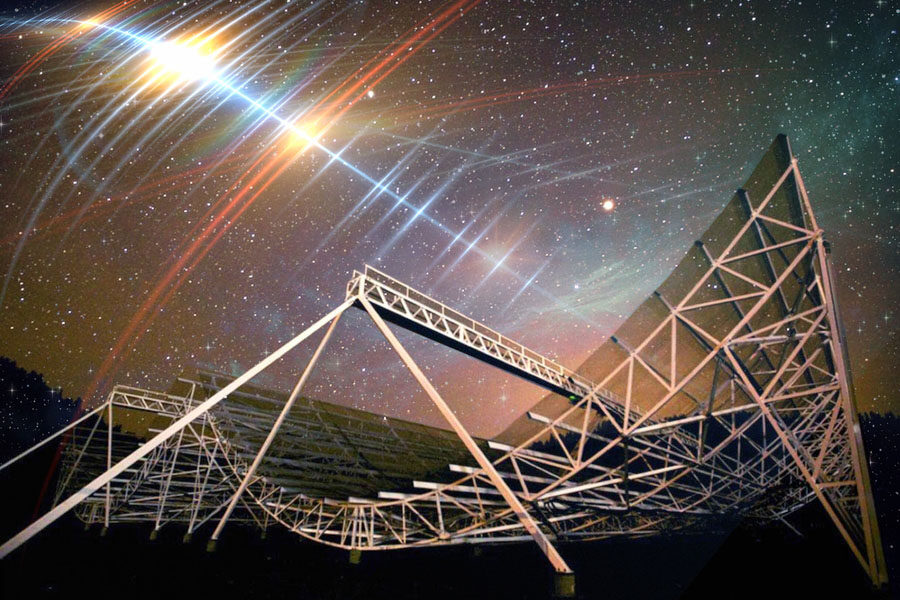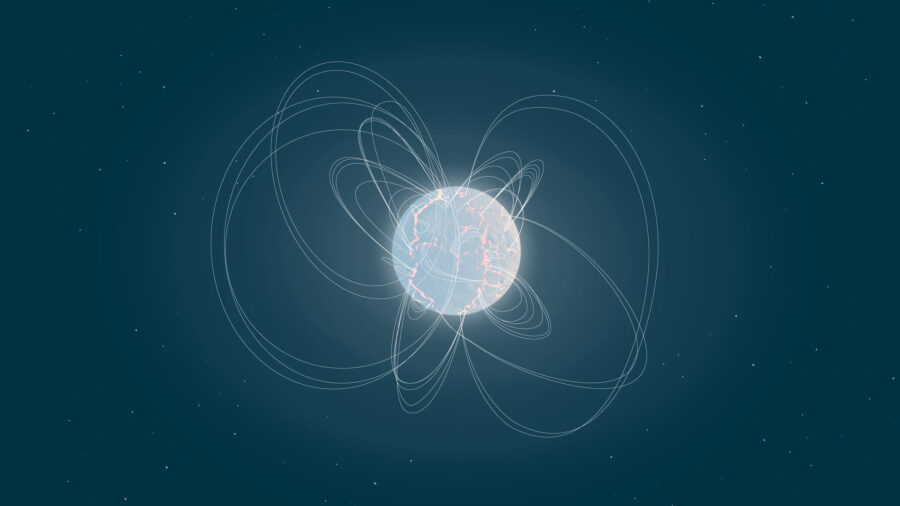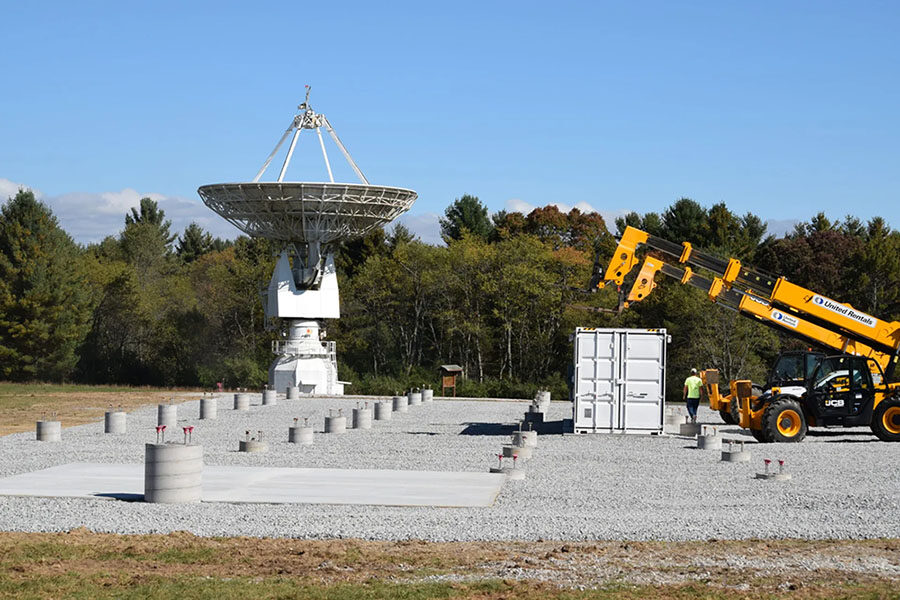Scientists have observed pulses from a fast radio burst, suggesting the flash might have come from a neutron star.

Photo courtesy of CHIME, with background edited by MIT News
Fast radio bursts (FRBs) are extremely powerful flashes of radio waves that typically last only a few milliseconds. They are usually detected as singular events, but a few have been found to repeat. The vast majority of those observed so far have come from far beyond our galaxy, and their origins remain mysterious. But now, an international collaboration has detected a unique FRB that might finally give us some answers.
Fast Radio Burst Origins
The Canadian Hydrogen Intensity Mapping Experiment (CHIME) radio telescope in British Columbia is well-suited to observing FRBs and has cataloged several hundred since it came online in 2018. In 2020, CHIME was among the telescopes watching when a magnetar, a rare, highly magnetic neutron star, emitted a low-power version of an FRB from within our galaxy.
But the case for magnetars isn’t beyond dispute. There are many hypotheses about what objects and circumstances might produce FRBs, ranging from supernovae to inspiraling neutron stars to collapsing pulsars — even technosignatures are under consideration.
CHIME’s most recent FRB sighting, featured in the July 14th Nature, is unique in that it lasted about 3 seconds, much longer than the average FRB, and that emission pulsed like a heartbeat. These and other peculiar characteristics provide some evidence that this strange FRB might come from around a neutron star.
“Neutron stars emit radio waves as they rotate, like a lighthouse,” explains study lead Daniele Michilli (MIT). “These beams of light flash in a particular way that look similar to what we saw in this event.”

ESA
There’s also some evidence that the emission has come from the star’s magnetosphere, the region around the star dominated by the star’s magnetic field, instead of even further out, as some models have predicted.
“New data like this is essential for building accurate models,” says Jens Mahlmann (Princeton), who was not involved in this study. “This signal, with an imprinted periodicity, could be the clue that at least some FRBs are produced by rotating neutron stars. Their spinning magnetic fields may play an important role for explaining subpopulations of FRBs.”
Outriggers on the Sky
CHIME takes a wide view of the sky, which means that it captures lots of events (a few FRBs a day), but it can’t pinpoint their exact location. Michilli hopes that upcoming improvements to CHIME and multi-messenger observations of these events will yield more definitive information about their origins in the near future.
“Right now, we are building other, smaller CHIMES around the world,” he says. “The plan is to triangulate the position of the signals, similar to the way a cell phone GPS works.”

National Science Foundation / Green Bank Observatory
“The CHIME telescope can currently locate the position of a fast radio burst to a patch of sky equivalent to the size of the full Moon,” adds Patrick Boyle (McGill University, Canada), who is managing the CHIME/FRB Outriggers project. “With the addition of the three new outrigger telescopes, this patch of sky can be reduced to the size of a quarter held at roughly 40 km.” The outriggers will be located at Green Bank Observatory in West Virgina, Hat Creek Radio Observatory in California, and near Princeton, British Columbia.
Once CHIME can trace a good number of FRBs to known astrophysical objects, astronomers hope we will be on our way to figuring out how these powerful and fleeting explosions are actually produced.
 1
1








Comments
Martian-Bachelor
July 20, 2022 at 7:45 pm
Quarter diameter = 24.26 mm, so angular size at 40 million mm's = 1/8th arc-second.
Good to see we're finally catching up with the Canadians.
You must be logged in to post a comment.
You must be logged in to post a comment.